From Oct. 11, 2025 to Jan. 18, 2026, the Spazio Scoperte of the Galleria Sabauda, on the second floor of the Royal Museums of Turin, will host the exhibition Il “divino” Guido Reni nelle collezioni sabaude e sugli altari del Piemonte. The exhibition, curated by Annamaria Bava and Sofia Villano, pays tribute to the great Bolognese painter Guido Reni (Bologna, 1575 - 1642) on the 450th anniversary of his birth, through an itinerary that brings together more than twenty works, including paintings, drawings and engravings, from the Turin collections and from important loans.
Alongside works permanently housed in the Royal Museums, there are loans from the Piedmontese territory and the Musée des Augustins in Toulouse. The collection of works documents the fortune that the art of Guido Reni, already referred to as “the divine” by his contemporaries, enjoyed at the Savoy court since the 17th century. Indeed, the taste for classicism, harmony of form and ideal luminosity that characterize the painter’s style found perfect correspondence with the aesthetic and symbolic aspirations of the court of Turin, which was committed to building its own image of refined and religious power.
Reni’s painting, marked by composure and clarity, reflected a vision of beauty that combined Renaissance heritage with Baroque spiritual balance. In the palaces and churches of Savoy, his art became a model of elegance and measure, a symbol of an ideal of decorum and magnificence that spanned three centuries of collecting.
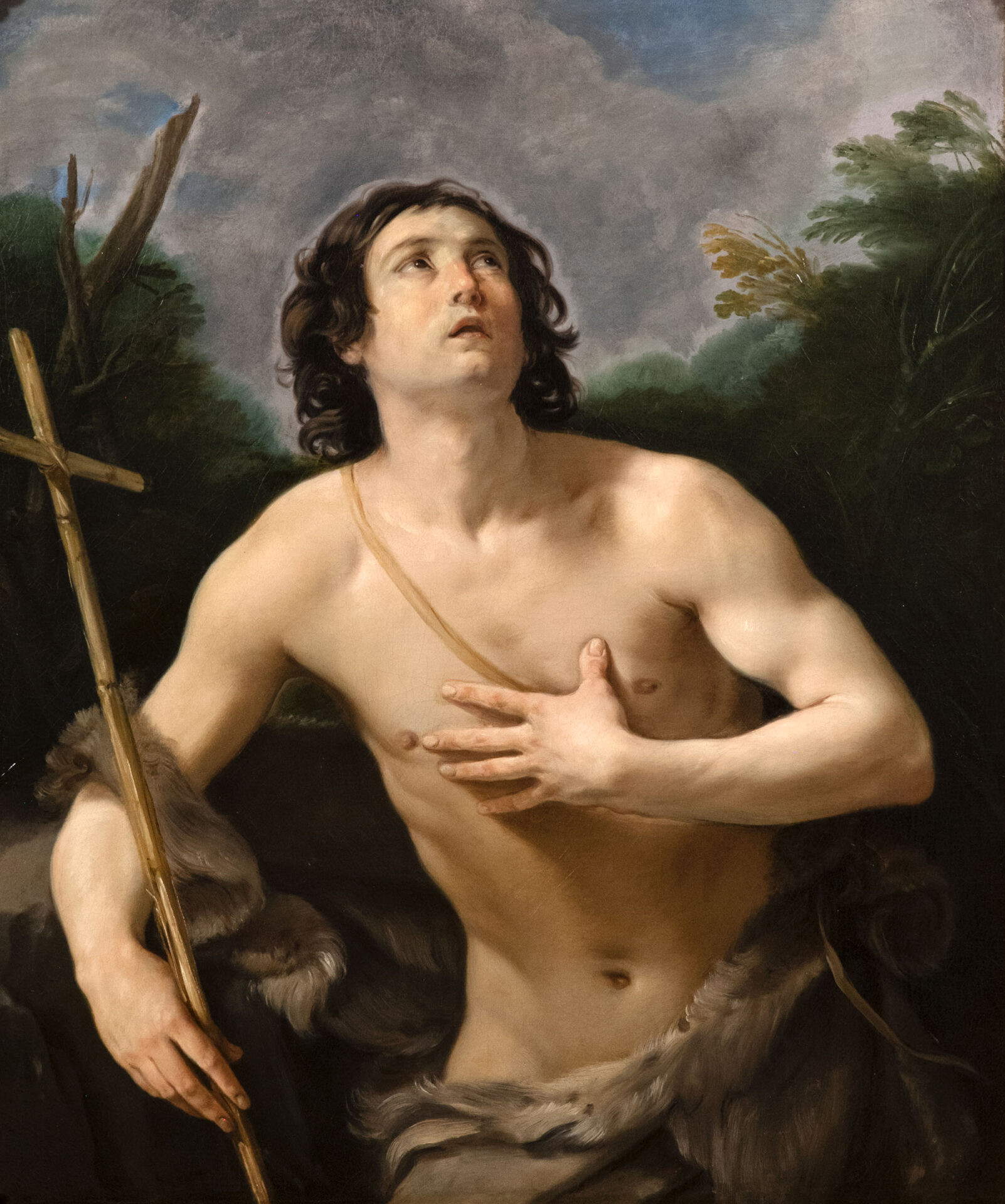
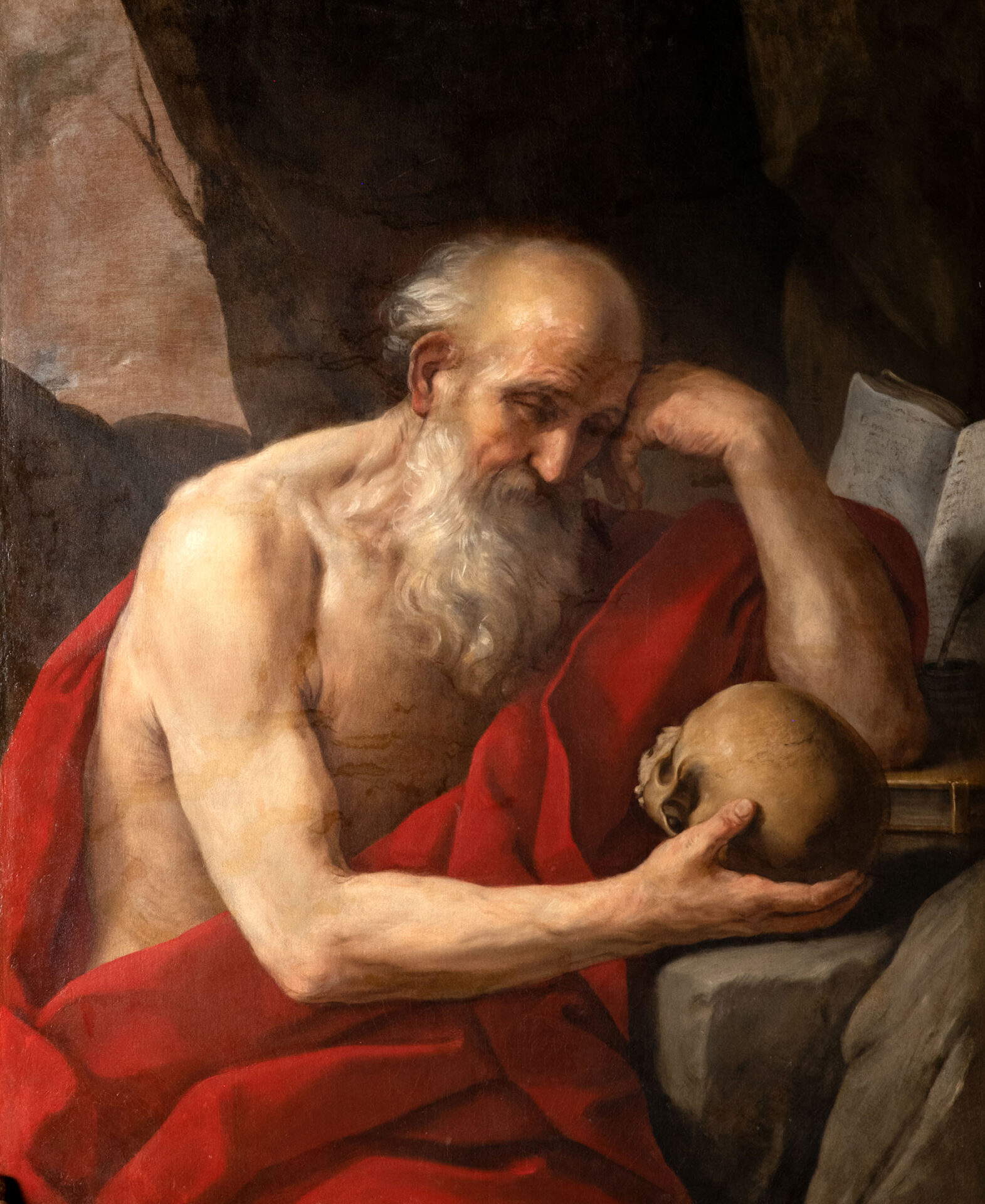
The exhibition route opens with paintings that entered the ducal collections as early as the 17th century, including the two versions of Marsyas flayed by Apollo. The first, intended for the “Chamber of the Muses” in the Ducal Palace, was requisitioned by Napoleon’s troops in 1799 and is now in the Musée des Augustins in Toulouse; the second, a 17th-century replica, is in the Galleria Sabauda.
In both, Guido Reni translates with force and rigor a famous episode from Ovid’s Metamorphoses, that of the punishment inflicted by Apollo on the satyr Marsyas, guilty of challenging him in a musical contest. The composition, dominated by the ideal figure of the god, contrasts Apollonian perfection with the suffering of the body of Marsyas, a symbol of punished hubris. The work embodies a moral allegory dear to Baroque culture: the victory of reason and harmony over brutality and excess.
Reni’s pictorial invention here ties in with the cultured context of the Roman Accademia dei Desiosi, founded by Cardinal Maurizio di Savoia, to whom the original work was donated by Cardinal Alessandro d’Este. Maurizio di Savoia, a refined collector and patron of the arts, stayed for a long time in Rome, where he became one of the most active patrons of Bolognese artists, including Guido Reni, to whom he entrusted religious and allegorical subjects of great commitment.
Cardinal Maurice’s commission also dates the canvas with Saint Maurice Receiving the Palm of Martyrdom, from the Sanctuary of Santa Maria dei Laghi in Avigliana. The painting, made between 1615 and 1618, depicts the saint in the uniform of a Roman legionnaire, at the center of a luminous scene that alternates between the mystical calm of the main figure and the drama of the battle in the background. St. Maurice, his face illuminated by an aura, lays his sword at his feet while a cherub hands him the palm, a symbol of martyrdom and redemption. The work marks a moment of transition in the master’s style, as he gradually abandoned the formal rigor of his youth for softer painting dominated by mellow tones and light.
A small oil on copper depicting theAllegory of Fame, of extraordinary chromatic refinement, belonged instead to the personal possessions of Christine of France, duchess of Savoy and widow of Victor Amadeus I. Possibly received as a gift from Marquis Filippo San Martino d’Agliè in 1638, the painting was believed to be Reni’s autograph in the early inventories of the Royal Gallery, but it is now attributed to Giovanni Giacomo Sementi, a close collaborator of the master.
The exhibition also brings together works that belonged to Prince Eugene of Savoy Soissons, a great leader and collector. In his Viennese residences he kept important examples of Bolognese painting in the classicist taste, which were later brought into the royal collections of Turin after his death. Prominent among them are Saint John the Baptist, a masterpiece of Reni’s late maturity, Saint Jerome and Death of Lucretia, subjects that show the balance and purity of his pictorial language. Another canvas, Lotta tra amorini e putti baccanti, which came from the Savoy Carignano branch and was transferred to the Royal Palace in 1831 at the behest of Carlo Alberto, is considered a second version, probably autographed, of the painting made by Reni for Marquis Ludovico Facchinetti, now in the Doria Pamphilj Gallery in Rome.
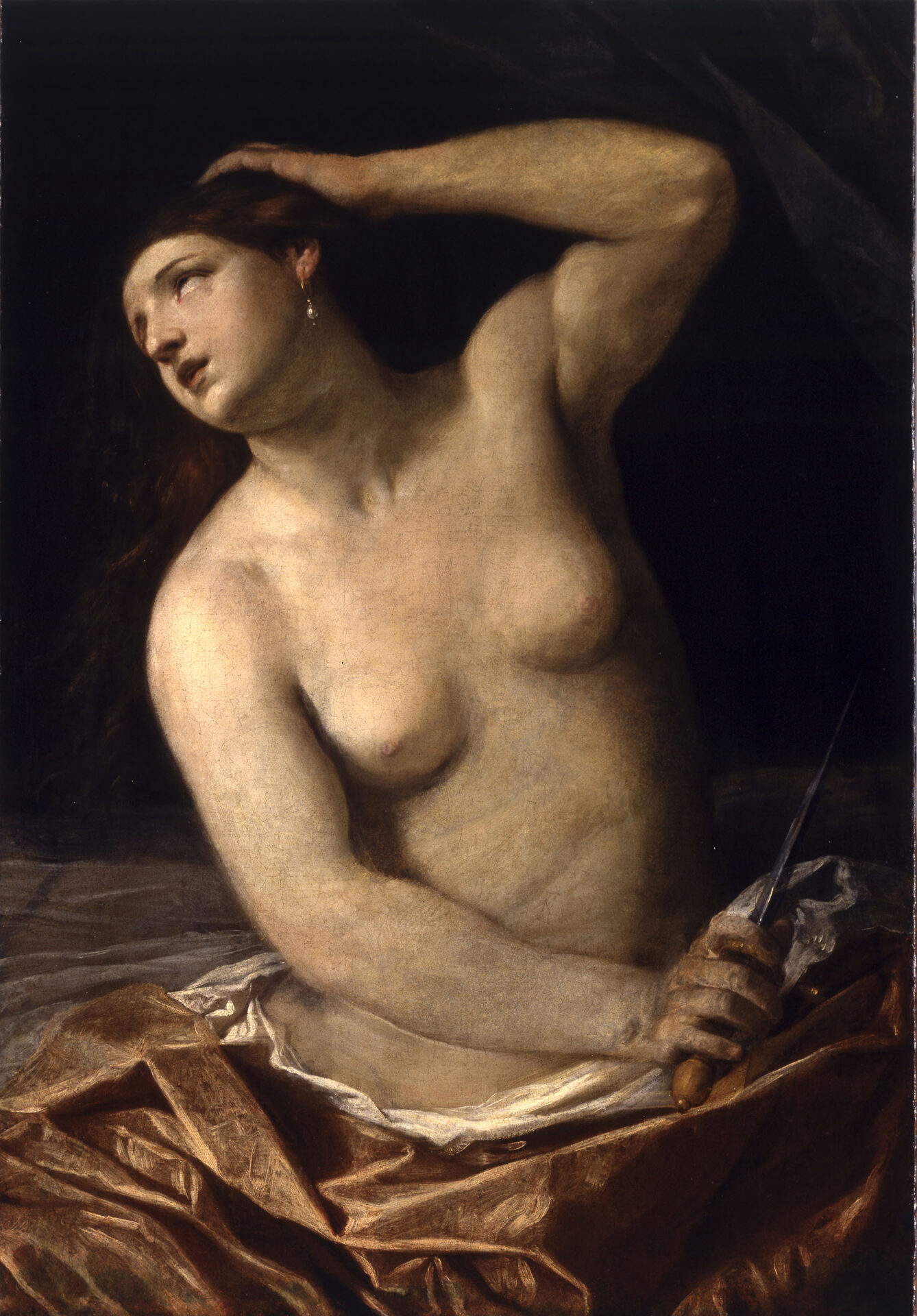
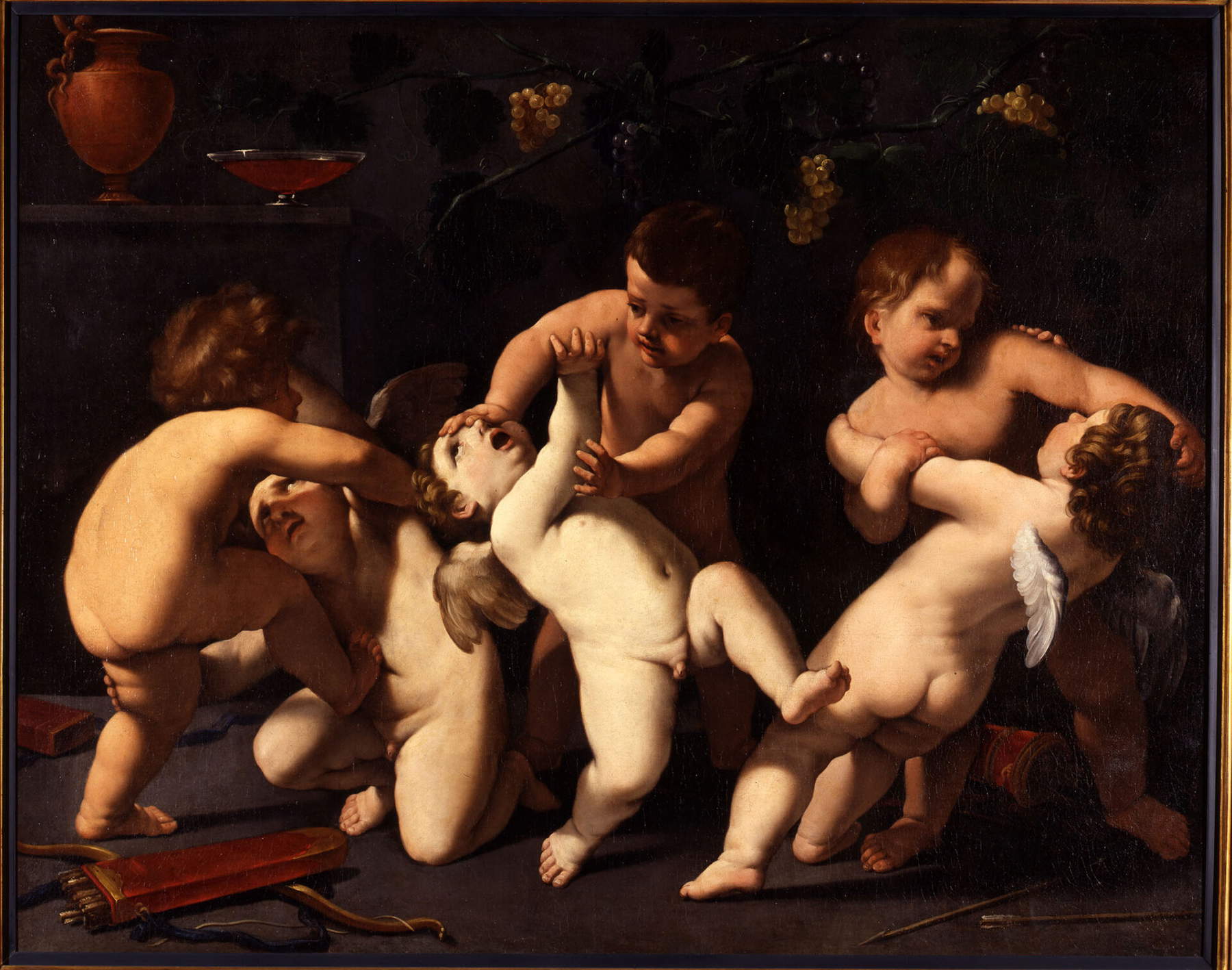
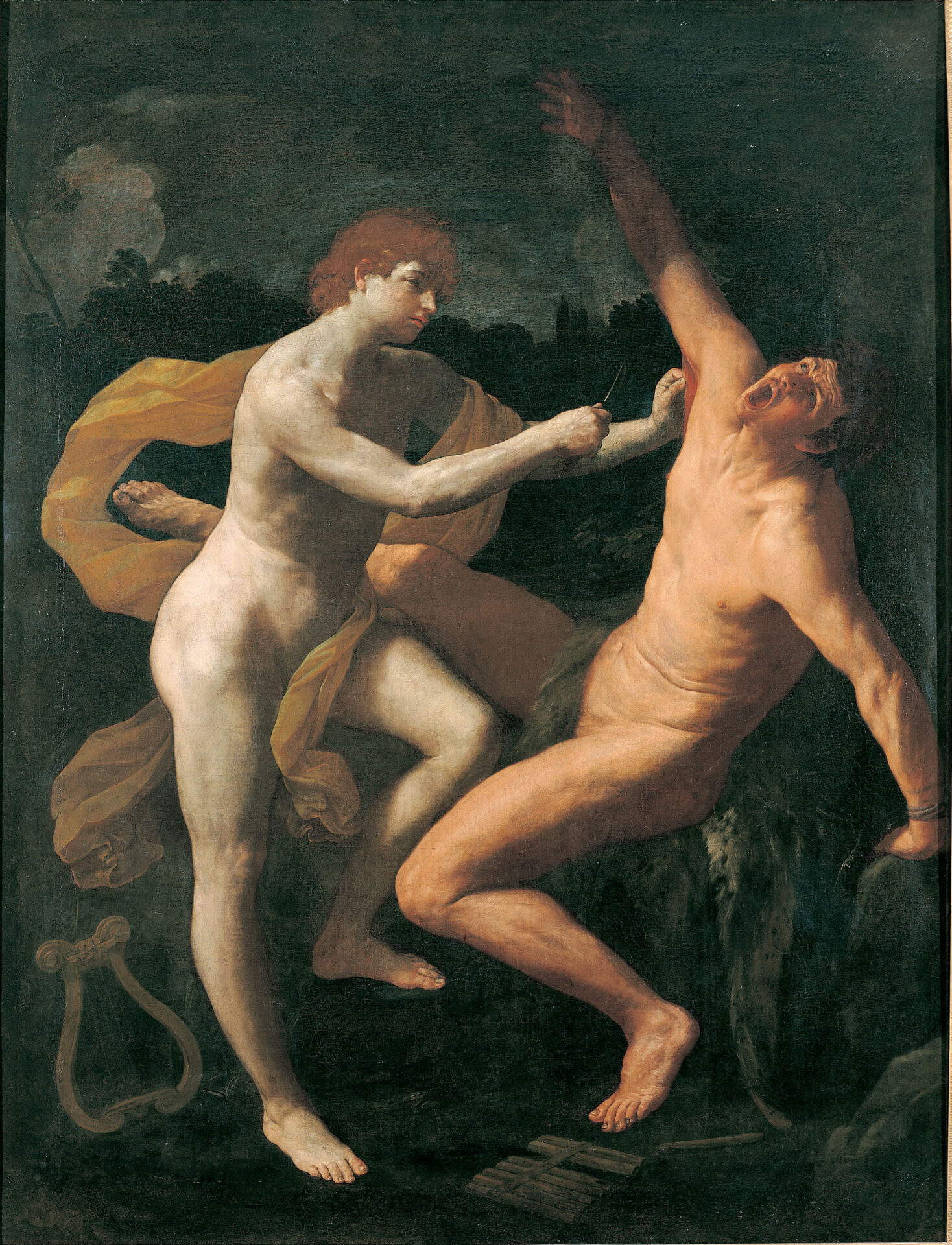
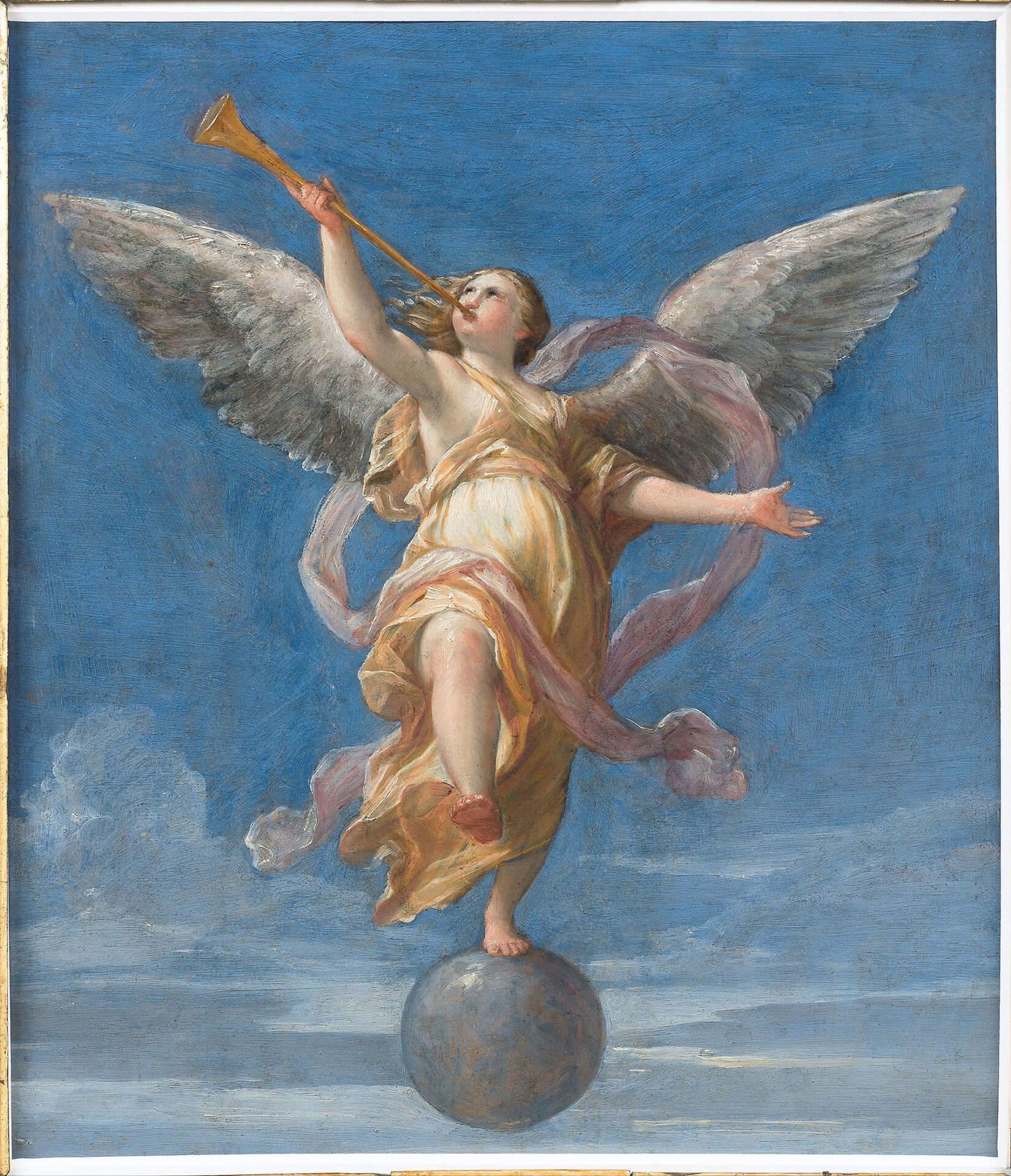
A section of the exhibition is dedicated to thegraphic and engraving activity of Guido Reni. Among the works on display are a Madonna and Child with St. John and a Holy Family with two angels in flight, from the Sabauda Gallery’s graphic art collection. The engravings are distinguished by their elegant, flowing lines, their light and sure sign, and the intense spirituality that pervades the figures.
A prominent place is also reserved for the Dissegni degl’apparati fatti in Bologna per la venuta di N.S. Papa Clemente VIII l’anno MDXCVIII, engraved by Reni and first published in 1598. The Sabauda Gallery preserves the frontispiece and nine plates of the edition printed in Bologna by Gioseffo Longhi, evidence of the ties between the painter and the publishing industry of his time.
Two drawings from the Royal Library complete the section: Study for a Friar’s Head in Ecstasy and Study of a Young Woman’s Head with Studies of Hands on the verso. These sheets, executed in charcoal and red stone, reveal the extraordinary finesse of Reni’s sign, attentive to the grace of faces and the modulation of chiaroscuro.
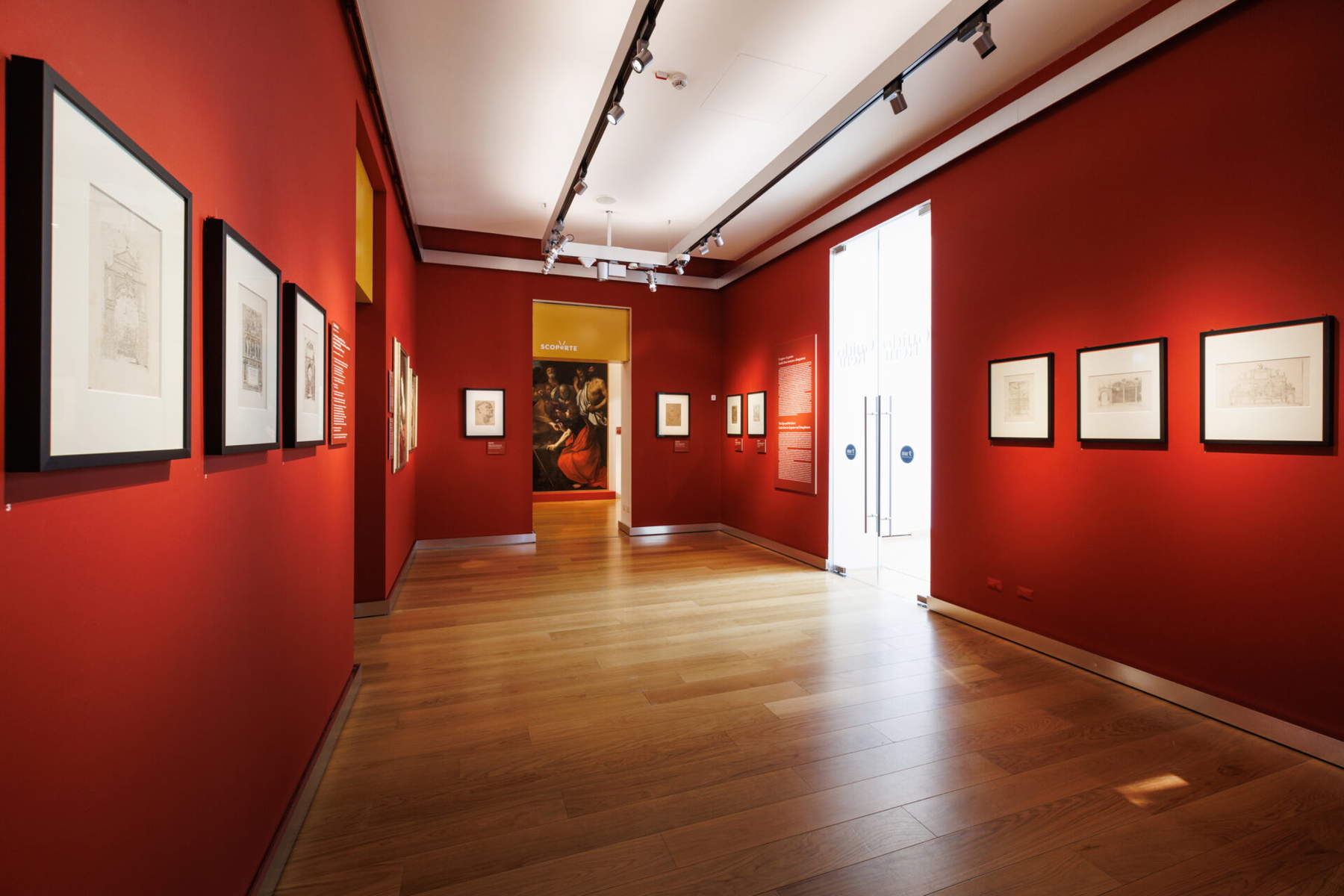
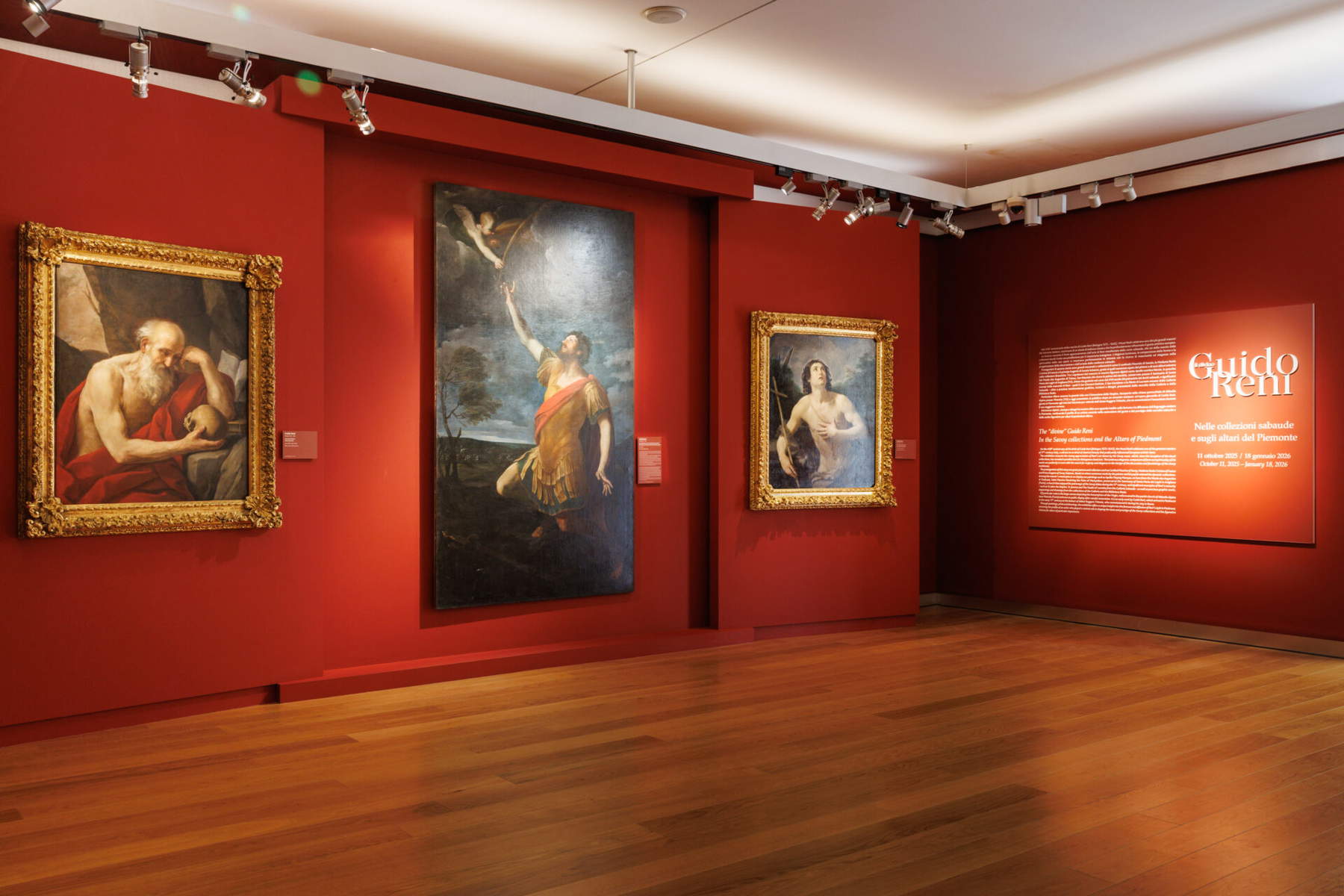
The highlight of the exhibition is the presentation of the large altarpiece of theAssumption of the Virgin, rediscovered in the parish church of Abbadia Alpina, a hamlet of Pinerolo. The work, made between 1605 and 1606 on commission from Abbot Ruggero Tritonio, arrived in Piedmont as a gift to the Benedictine church of Santa Maria, of which Tritonio was commendatory abbot.
Exhibited for the first time after a complex restoration carried out by Cesare Pagliero ’s workshop under the direction of the Soprintendenza Archeologia, Belle Arti e Paesaggio of Turin, with the support of the Ministry of Culture and the Diocese of Pinerolo, the canvas constitutes a valuable testimony to Guido Reni’s early Roman activity. In this period the young painter came into contact with Caravaggio’s painting and assimilated its dramatic realism, reworking it in a personal, more lyrical and spiritual key.
TheAssumption of the Virgin thus represents a fundamental piece for understanding the master’s training and the spread of his language in Piedmont. The restoration has restored the brilliance of the colors and the lightness of the angelic figures accompanying the Virgin to heaven, confirming Reni’s ability to combine solemnity and grace, devotion and harmony.
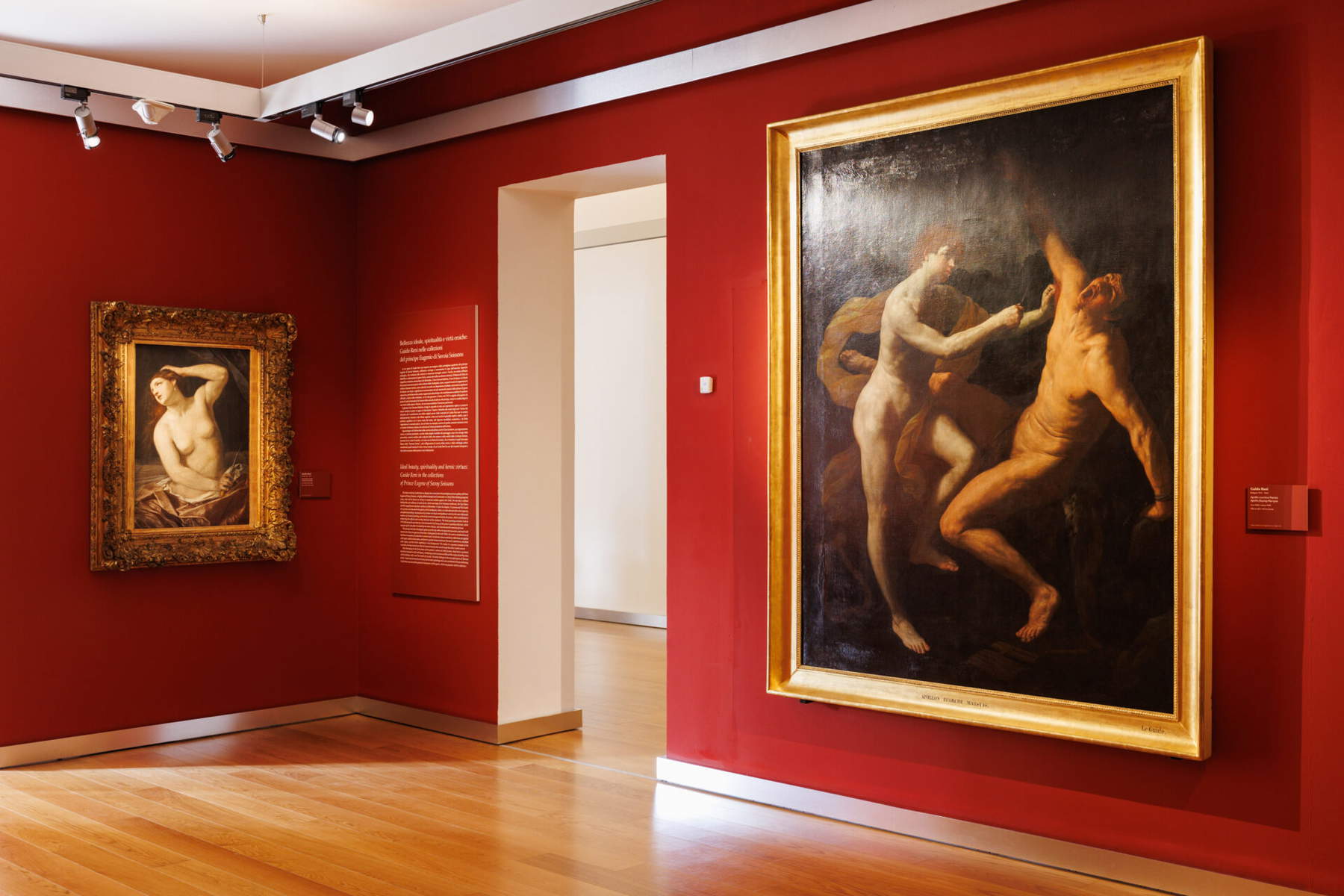
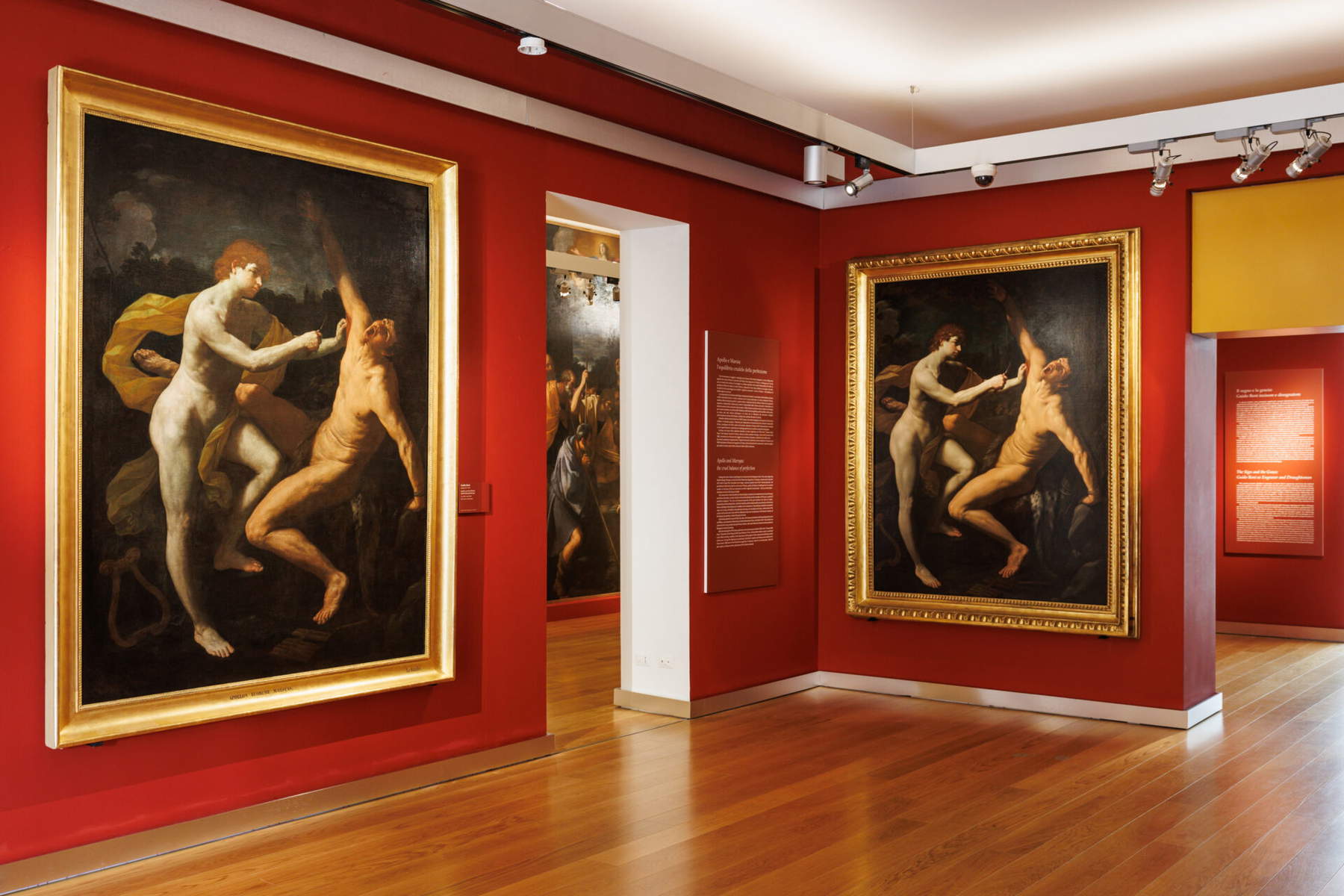
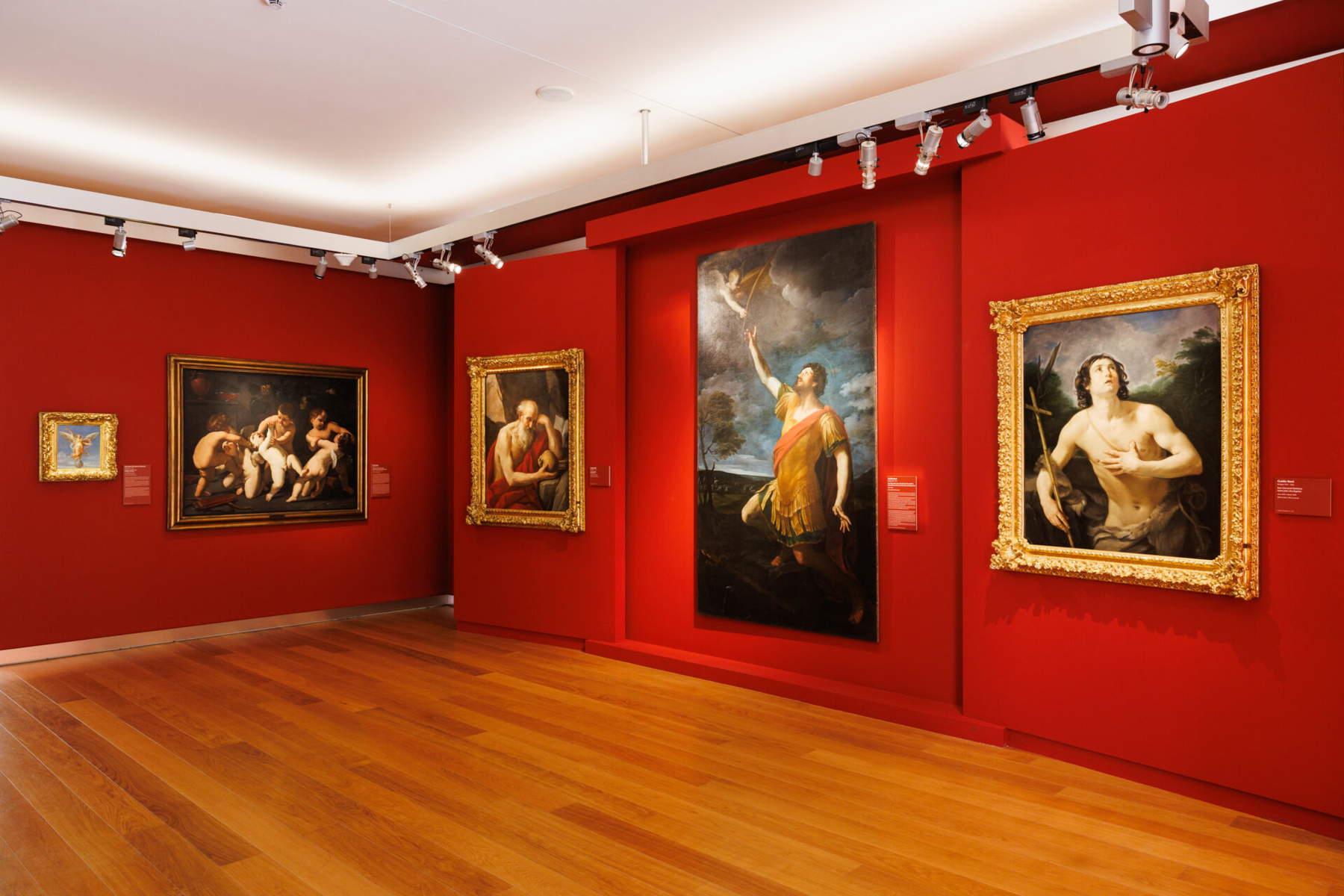
The exhibition at the Musei Reali, hosted until January 18, 2026, not only celebrates Reni’s genius, but aims to investigate the deep relationship between his art and Savoy patronage. Through the canvases, drawings and engravings, a web of relationships emerges, linking Rome, Bologna and Turin in a network of cultural and religious exchanges. Reni’s work, in the Piedmontese context, thus becomes emblematic of an international taste, capable of fusing Counter-Reformation spirituality with courtly elegance.
The exhibition is open Thursday through Tuesday from 9 a.m. to 7 p.m. (closed Wednesdays), with admission included in the Royal Museums ticket. The full ticket costs 15 euros, reduced to 2 euros for 18-25 year olds. Admission is free for people under 18, people with disabilities and accompanying persons, teachers with school groups, tour guides, Ministry of Culture personnel, Abbonamento Musei and Torino + Piemonte Card holders, ICOM members and accredited journalists.
 |
| In Turin, the exhibition on Guido Reni in the Savoy collections |
Warning: the translation into English of the original Italian article was created using automatic tools. We undertake to review all articles, but we do not guarantee the total absence of inaccuracies in the translation due to the program. You can find the original by clicking on the ITA button. If you find any mistake,please contact us.